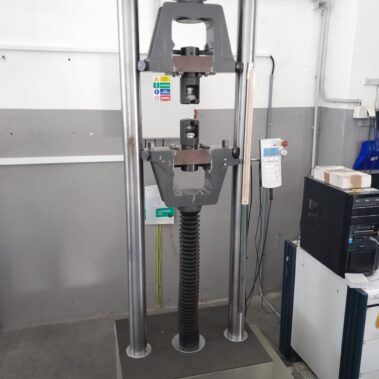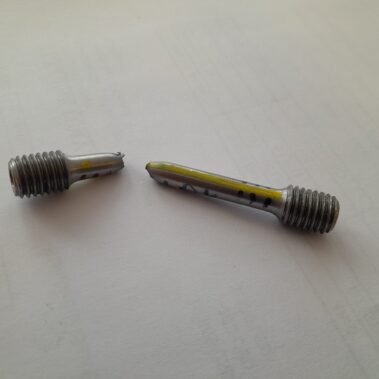Do you need to assess the mechanical properties of materials and components? Tensile testing measures the strength and stress resistance of a material when subjected to a tensile force. The test is performed both in the standardized version (most often according to EN ISO 6892-1) and for atypical samples including non-standardized measurement procedures (e.g. testing of bonded and soldered joints, very thin profiles, wood, composite polymer materials, etc.).
Tensile testing
The principle of the tensile test is to expose the material sample to a gradually increasing tensile force up to the point of failure. During the test, the force exerted on the specimen is measured, while the elongation or deformation of the specimen is monitored. The force and strain values obtained are used to create a tensile diagram that shows the relationship between the stress and deformation of the material.
Tools for tensile testing
Two measuring devices are available for measurement – up to 100 kN we use the ZD 10/90 universal tensile machine, up to 1,000 kN we use the ZD 100 universal tensile machine. As these are universal machines, other measurements such as static bending tests, static compression tests, spring tests, dynamic tests etc. can be carried out by simple modification.
Tensile tests are carried out on test pieces of solid cross-section, e.g. tubes, wires and rods of smaller dimensions, on machined bodies of rectangular or segmented strip types and on bodies of circular cross-section. The size of the cross-section to be tested must correspond to the length of the test piece including the ends (heads) for clamping in the testing machine. If sufficient material is available, a specimen length of 300 mm in the direction tested will be sufficient for most applications. We can arrange for the manufacture of test specimens from a qualified supplier.
The requirements for test equipment, types of test bodies and test procedures are specified in the standard. For some test cases, the laboratory also refers to the relevant special standards. The output of the tests is an accredited test report in the Czech and your required language.
A list of the test procedures for which the laboratory is accredited can be found in the annex to the certificate.


